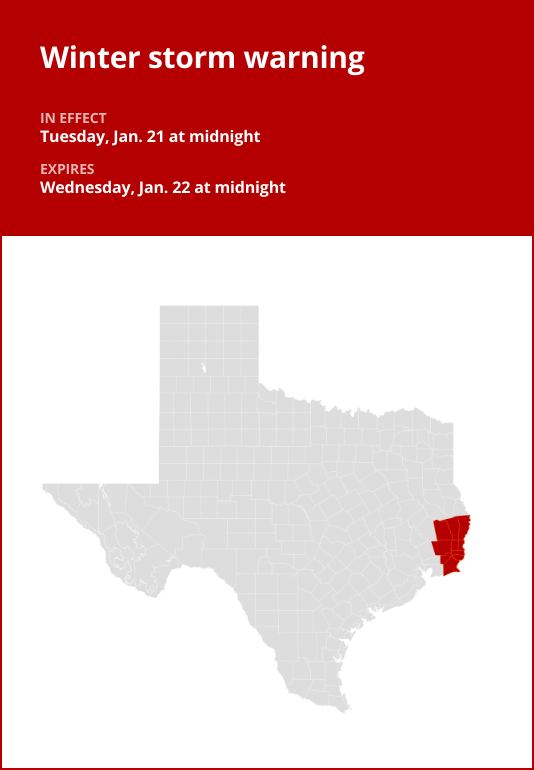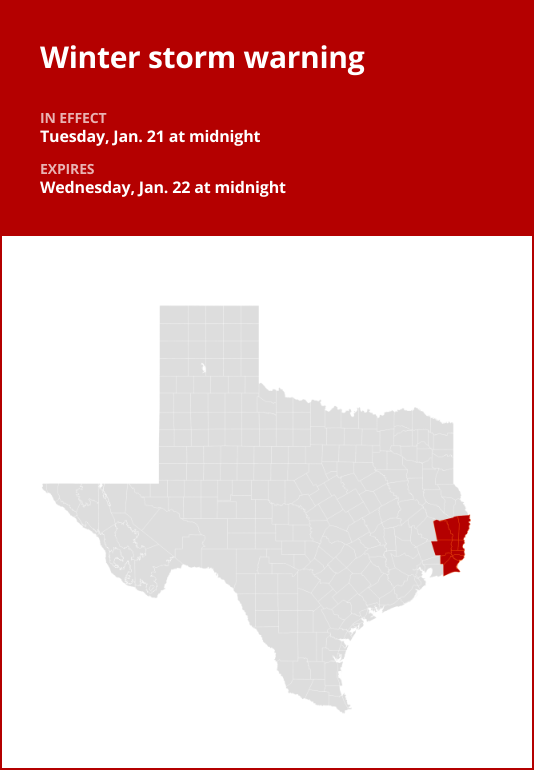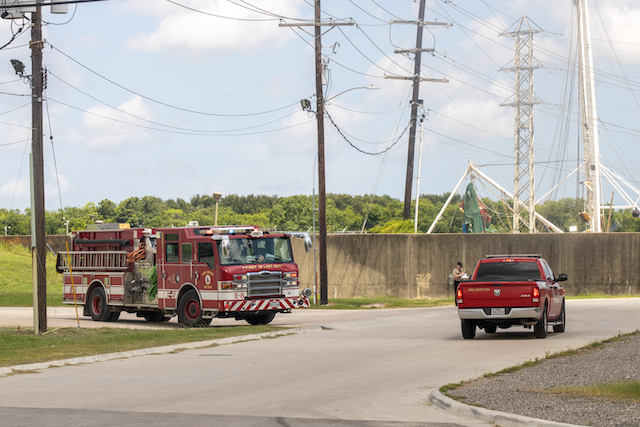Southeast Texas under a winter storm warning Tuesday and Wednesday
Published 2:45 pm Sunday, January 19, 2025
On Sunday at 2:42 p.m. the National Weather Service issued a winter storm warning valid from Tuesday midnight until Wednesday midnight. The warning is for Upper St. Martin, Lower St. Martin, West Cameron, East Cameron, Northern Calcasieu, Northern Jefferson Davis, Northern Acadia, Upper Vermilion, Upper Iberia, Upper St. Mary, Southern Calcasieu, Southern Jefferson Davis, Southern Acadia, Lower Vermilion, Lower Iberia, Lower St. Mary, Northern Jasper, Northern Newton, Southern Jasper and Southern Newton as well as Vernon, Rapides, Avoyelles, Beauregard, Allen, Evangeline, St. Landry, Lafayette, Tyler, Hardin, Jefferson and Orange counties.
The NWS states to be ready for, “Heavy mixed precipitation possible. Total snow and sleet accumulations between 4 and 6 inches and ice accumulations up to 0.02 inches possible south of the I-10 corridor to the coast. Winds gusting as high as 35 mph.”
“Plan on slippery road conditions. The hazardous conditions could impact the Tuesday morning and evening commutes,” adds the NWS. “If you must travel, keep an extra flashlight, food, and water in your vehicle in case of an emergency. The latest road conditions for the state you are calling from can be obtained by calling 5 1 1. Persons are urged to stay indoors until conditions improve. If you must go outside, dress in layers. Several layers of clothes will keep you warmer than a single heavy coat. Cover exposed skin to reduce your risk of frostbite or hypothermia. Gloves, a scarf, and a hat will keep you from losing your body heat. Persons should consider delaying travel. Motorists should use extreme caution if travel is absolutely necessary.”

Winter driving essentials: Recommendations from the NWS for safe journeys
Trending
Winter’s icy grip often turns roads treacherous, leading to over 6,000 weather-related vehicle fatalities and more than 480,000 injuries each year. When you find yourself on snowy or freezing rain-slicked roads, your top priority should be safety. Slow down and exercise caution. In temperatures near freezing, it’s prudent to assume icy patches on the road and adjust your driving accordingly. Be on alert for ice accumulating on power lines and tree branches, as they may break and fall. If possible, avoid driving in these conditions altogether. But if you must venture out, choose routes with fewer trees and power lines, and never touch a downed power line. If you encounter one, dial 911 immediately. Here are additional winter weather driving tips:
Share your travel plans:
When venturing out of town in hazardous winter weather, be sure to inform family or friends of your destination, your intended route, and your estimated arrival time.
Prepare your vehicle:
Ensure your gas tank is full and equip your vehicle with essential winter supplies such as a windshield scraper, jumper cables, a small shovel, flashlight, cell phone, blanket, extra warm clothing, drinking water, and high-calorie non-perishable food.
Stay calm when stranded:
Trending
If you become stranded, stay composed. Notify someone about your situation and location. Avoid attempting to walk to safety. Attach a cloth to your car’s antenna or mirror to signal that you require assistance. Make your vehicle more visible by using the dome light and flashers.
Be aware of snow plows:
Keep an eye out for snow plows and provide them with ample room to pass. Only overtake a plow when you have a clear view of the road ahead.
Check road conditions:
Before embarking on your journey, verify the current road conditions to make informed travel decisions.
These winter driving tips from the NWS are your key to a safer journey on snow-covered roads. By following these guidelines, you can significantly reduce the risk of accidents and ensure your well-being during challenging winter weather.
Source: The National Weather Service






